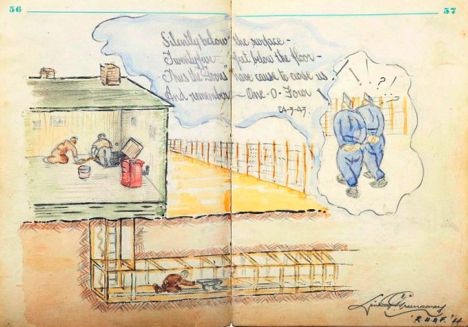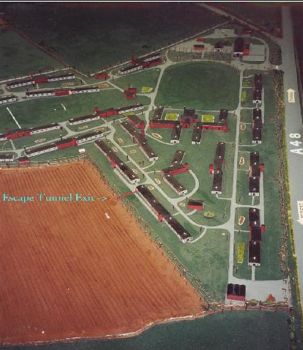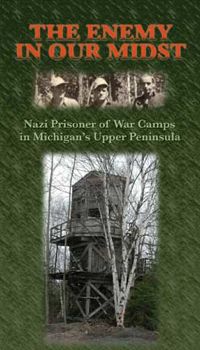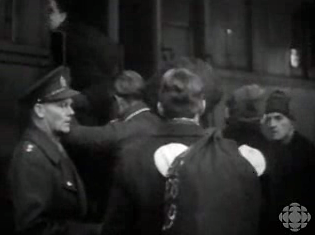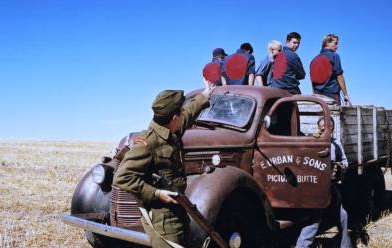Posted by Kim on August 25, 2010 at 8 a.m.

|
|
BBC
|
Apropos of yesterday's post, here's another diary from a POW held at Stalag Luft III.
Last November, the BBC aired a two-part series on Ted Nestor's War Diary. According to their article:
On the night of 28 August 1943, Flt Lt Ted Nestor was on an RAF raid to bomb Nuremberg when the Stirling bomber he was navigating was shot down.
Despite suffering severe burns, he parachuted to safety but was soon captured and taken to Stalag Luft III, the POW camp made famous in the film The Great Escape.
During his captivity, Nestor kept an illustrated diary. Some of the pages can be seen in an audio slideshow of his daughter telling his story.
Author: Richard Turner
Publication: BBC Manchester
Section: News
Length: 635 words
Date: November 23, 2009
Posted by Kim on August 24, 2010 at 8 a.m.
In February, Mail Online in the UK published rare WW2 sketches drawn in the diary of a British POW.
According to the article:
The pencil and watercolour sketches doodled into Private William MacDonald's log depict a humorous side of life at the infamous Stalag Luft III camp during World War Two.
The diary includes sketches of the tunnels made famous in The Great Escape.
Follow the link to see more images.
Publication: MailOnline
Section: News
Length: 794 words
Date: February 4, 2010
Posted by Kim on July 20, 2010 at 8 a.m.

|
|
Galt Museum
|
In 2009, The Military Museums in Calgary, Alberta featured an exhibit called "For You, the War is Over." In 2008 it was displayed at the Galt Museum and Archives in Lethbridge, Alberta.
A little known story from WWII is that nearly 34,000 German prisoners of war were sent to internment camps in Canada. As part of the war effort, Alberta housed and manned four of the largest camps. Many Albertans who served overseas were made prisoners in Germany, including those captured at Dieppe in 1942 and members of the Royal Canadian Air Force shot down over enemy territory.
This exhibit compares the prison experience of Canadian and German POWs.
A few highlights are covered in the media kit. (pdf)
For additional details, see the very interesting blog created by Jill Browne.
Posted by Kim on June 15, 2010 at 8 a.m.

|
|
http://www.cityofaliceville.com/POWOverview.htm
|
One of the largest POW camps in the U.S. was located in Aliceville, Alabama. It had the capacity to hold 6,000 POWs.
The Aliceville Museum and Cultural Arts Center includes a permanent collection that features:
...lasting artistic expressions made by the Germans. Through their paintings, letters, books, sculptures, wood crafting, pottery, musical instruments and photographs a vivid picture of life at Camp Aliceville is revealed.
The museum also shows a 14 minute documentary which includes interviews with former POWs and military guards.
Posted by Kim on June 09, 2010 at 8 a.m.
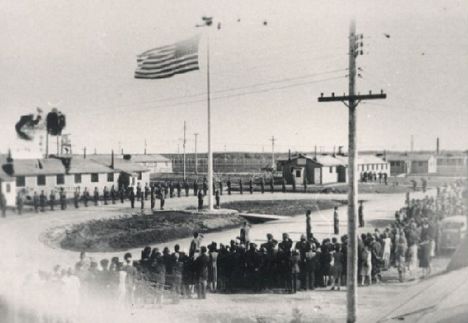
|
|
traces.org
|
TRACES (covered before) has 2 slideshows of the Algona, IA POW camp.
Posted by Kim on June 08, 2010 at 8 a.m.

|
|
pwcamp.algona.org
|
During WWII, a Camp in Algona, IA housed 10,000 German POWs. In 2004, the town opened a German POW museum with four exhibits.
According to the museum's website:
Many residents and vistors remark that they had no idea such a camp existed, so the Camp Algona POW Museum seeks to inform and educate visitors about this important time in history, both for Algona and the world at large.
Their website includes many interesting photos and stories.
For instance:
Posted by Kim on June 03, 2010 at 8 a.m.
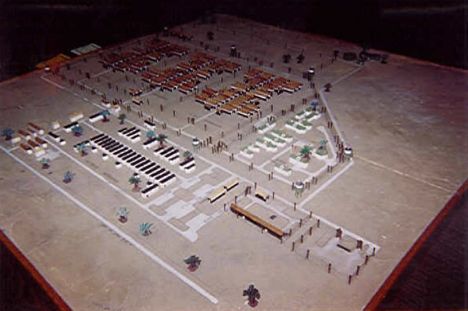
|
|
camphearne.info
|
Camp Hearne was part of the video we covered yesterday.
A detailed model of the camp (pictured above) is on display at the Hearne Chamber of Commerce. Their site notes:
A replica of one of the barracks, which is being built from original floor plans, is almost complete. It will house a new on-site visitors center.
Progress on the project is being updated regularly on a blog.
The Friends of Camp Hearne have useful information, including lesson plans for teachers.
The PBS show History Detectives covered the camp in 2005. We could not find a video clip, but here's a transcript (PDF) of the episode.
Michael R. Waters and his students put together some historical info.
William Kent Brunette maintains an extensive set of links.
Posted by Kim on June 02, 2010 at 8 a.m.
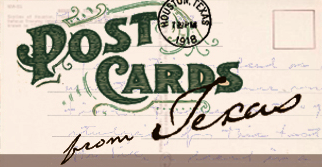
|
|
http://www.houstons55.com/postcards-from-texas/
|
In March, Houston's Channel 55 aired "POW Camps in Texas" as part of their "Postcards from Texas" series.
Featured in the episode:
-
Mike Waters, author of Lone Star Stalag
-
Heino Erichsen, former POW at Camp Hearne
The video was posted in 2 parts:
Posted by Kim on June 01, 2010 at 8 a.m.

|
|
clker.com
|
In 1973, Robert Warren Tissing, Jr. completed his Baylor University Master's Thesis: "Utilization of Prisoners of War in the United States during World War II: Texas, A Case Study".
It's available online courtesy of the Robertson County Historical Commission.
From the conclusion:
The availability of prisoners for farm labor enabled farmers to save time and money by planting more crops and harvesting them faster. The German prisoners of war were well-treated during their stay in Texas. Almost all of the farmers enjoyed being around the prisoners and described them as being most cooperative and well-mannered. Many of the prisoners wrote letters to the farmers and expressed their desire to return to Texas.
Posted by Kim on May 20, 2010 at 8 a.m.
The largest escape attempt made by German POWs in Great Britain during WWII occurred at Camp 198 in South Wales, aka Island Farm, in March of 1945.
According to a website dedicated to the camp:
Less than four months after the first officer-prisoners had started arriving at Island Farm and two months after [camp Commandant Lieutenant-Colonel] Darling had discovered the first of the paired tunnels, 70 prisoners escaped.
The site has lots of great details, including:
-
details and pictures of the escape tunnel
-
a BBC news recording (00:40) detailing the escape
-
Multiple news cuttings reporting the escape and recapture of the POWs
-
newspaper article on the 55th anniversary of the breakout
-
actual photos of the escape tunnel, re-opened in 2003
Posted by Kim on May 07, 2010 at 8 a.m.
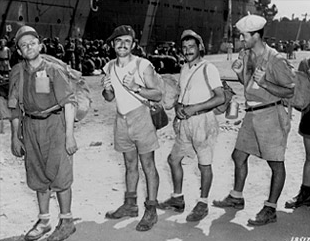
|
|
http://www.prisonersinparadise.com/
|
In addition to German POWs, the U.S. held about 51,000 Italian POWs during WW2.
Some are covered in an award winning documentary film. According to the film's website:
Featuring rare period footage of POW camps, "Prisoners in Paradise" follows six Italian POWs (and the women they met in America) on their extraordinary journey—full of challenges, love, perseverance, and good luck. Captured primarily in Northern Africa—where they had been surviving on hard biscuits and water—the Italian POW’s were uniformly amazed at the abundance of food in the USA and the generosity of their captors.
Interesting to note:
Shortly after the bulk of the Italian POW’s arrived, Italy officially switched sides in the war, and over ninety percent of the POWs agreed to collaborate with the Allied war effort.
The site includes a clip (4:54) from the film.
Posted by Kim on May 04, 2010 at 8 a.m.

|
|
amazon.com
|
There are plenty of movies to cover. This one is probably the most famous: "The Great Escape" starring Steve McQueen, James Garner and Richard Attenborough. It is based on the true story of a group of Allied POWs who escaped from Stalag Luft III.
According to its IMDb plot summary:
The Nazis, exasperated at the number of escapes from their prison camps by a relatively small number of Allied prisoners, relocates them to a high-security "escape-proof" camp to sit out the remainder of the war. Undaunted, the prisoners plan one of the most ambitious escape attempts of World War II.
According to this site, many of the scenes are true to life, though with the usual composite characters and mixed-up timelines.
release date: 1963, on DVD 2004
list price: $19.98
format: DVD
run time: 172 minutes
Posted by Kim on April 30, 2010 at 8 a.m.
WMNU-TV in Michigan has posted a viewer's guide (PDF) for the 2004 award winning documentary called "The Enemy in Our Midst: Nazi Prisoner of War Camps in Michigan's Upper Peninsula."
They also offer a booklet called POW Camps in the U.P. (PDF), which contains original articles cited in the documentary.
According to their site:
From 1944 to 1946, the German prisoners called five POW camps in the Upper Peninsula home: Camps AuTrain and Evelyn in Alger County, Camp Raco in Chippewa County and Camps Sidnaw and Pori in Houghton County. Brought in under a cloak of secrecy by the U.S. Army, the prisoners eventually encountered local residents, who were reluctant to accept the POWs.
and
The project, which took two years to complete, contains many scenes shot throughout the Upper Peninsula. Also included in the 161-minute documentary are hundreds of historic photos, vintage film and interviews with local residents who had encounters with the POWs.
Posted by Kim on April 29, 2010 at 8 a.m.
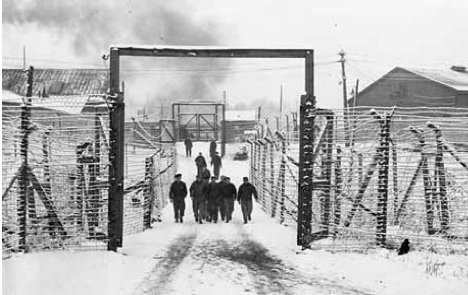
|
|
CBC Digital Archives
|
In 1981, CBC Radio's Morningside interviewed author John Melady. On the show, he detailed the escape of 28 German POWs from Camp X in Angler, Ontario during WWII.
The prisoners dug a 150-foot tunnel through the camp's exercise yard.
From the summary page:
It took a week for the escapees to be tracked down...two were found in downtown Montreal, while one was discovered in a barbershop in Ottawa and two others made it as far as Medicine Hat [Alberta].
Listen to the Escape from Camp X (5:17)
Posted by Kim on April 28, 2010 at 8 a.m.
The Canadian Broadcasting Corporation's Digital Archives includes a 2003 clip from the television show Country Canada.
According to the CBC:
The first boatload of 3,000 German officers arrived in Canada in June 1940. Canada had been accepting captured German merchant seamen from England as early as Sept. 1939.
The clip, Behind Canadian barbed wire (3:54), includes commentary from writer David Carter and former German POW Max Weidauer.
Posted by Kim on April 23, 2010 at 8 a.m.
Here's another good documentary: The Enemy Within (52:04).
Filmmaker Eva Colmers follows her father's story - Theo Melzer - who spent three and a half years in a POW camp in Lethbridge, Alberta. Growing up in Germany, she had always been puzzled by her father's fond memories of his POW life, so when she moved to Canada, she set out to rediscover this story. What she found surprised her. Watch as Theo Melzer, along with other POWs, recount how their lives were changed by the unexpected respect and dignity they received at the hands of their Canadian captors.
Lethbridge, AB is about 500 km (310 miles) south of Wainwright, AB.
Watch online for free, courtesy of the National Film Board of Canada. It's well worth your time.
title: The Enemy Within
filmmaker: Eva Colmers
release date: 2003
list price: free!
run time: 52:04 minutes
Posted by Kim on April 22, 2010 at 8 a.m.

|
|
CBC.ca
|
In 1981, The Canadian Broadcasting Corporation (CBC) television show Front Page Challenge featured Ed Billet, a German POW held in Canada during WWII, and author John Melady.
Included in the clip:
[Billet] looks back at his time in a camp in northern Ontario, where he was paid for his work in a lumber camp, chummed around with the guards and even romanced a local girl
and
author John Melady recalls as a young boy seeing PoWs working on his father's farm with red circles on the back of their jackets
Watch the clip: Canada's Posh POW Camps (5:32)
Interesting to note: Ed Billet was one of the first Germans to emigrate to Canada after the war.
Posted by Kim on April 21, 2010 at 8 a.m.
The November 2007 issue of World War II Magazine featured the Christmas Eve escape of 25 German POWs from a camp in Arizona during WWII.
According to the article:
Nearly 400,000 German POWs were brought to the United States during World War II, and officials recorded precisely 2,222 individual attempts by the Germans to flee their camps...
But none of these assorted breakouts could match in audacity, scale, or drama the plan under way at Compound 1A at Papago Park. It would trigger the largest manhunt in Arizona history, bringing in local law enforcement, the FBI, and even Papago Indian scouts.
Their "not so great escape" title seems unfair, but here's a taste of what the author may have had in mind:
While he was still on that call, another phone rang. It was the sheriff in Phoenix reporting he had an escaped POW in custody. Herbert Fuchs, a twenty-two-year-old U-boat crewman, had quickly grown tired of being wet, cold, and hungry and hitchhiked a ride to the sheriff's office. Soon thereafter, a Tempe woman called to say that two escapees had knocked on her door and surrendered; the phone rang again, and a Tempe man reported that two hungry and cold POWs had turned themselves in to him.
It took over a month to re-capture all of the escaped POWs, but all were eventually returned to camp.
Author: Ronald H. Bailey
Publication: World War II Magazine
Length: 3,959 words
Date: November 2007
Posted by Kim on April 20, 2010 at 8 a.m.
In 2001, The Phoenix New Times covered the release of a play called Escape from Papago Park.
The play retells the story of "the greatest breakout from a United States compound by prisoners of war during World War II."
During WWII, Papago Park in Phoenix, AZ housed 3,100 German POWs. Just before Christmas in 1944, 25 German soldiers escaped through a 178 foot tunnel. All were later recaptured.
One of those POWs, Heinrich Palmer said:
People think we were anxious to leave, some great group of prisoners storming back to the battlefront. But we were just young and bored. Or maybe it was this: The Americans put a bunch of German comrades from the same navy in the same compound. These men had great engineering talent. The Americans took away their freedom, called them troublemakers and told them they could never escape. So maybe it became our duty to prove them wrong. And it was very, very easy to prove them wrong.
Check out the photo gallery that goes with the article.
Subtitle: In 1944, 25 German POWs tunneled out of the Papago Park internment camp. Now, a Valley playwright has excavated their adventure.
Author: Robrt L. Pela
Publication: Phoenix New Times
Section: News
Length: 4,546 words
Date: March 8, 2001
Posted by Kim on April 16, 2010 at 8 a.m.
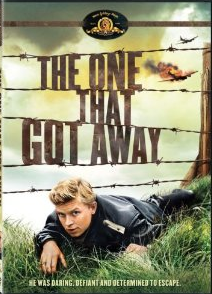
|
|
None
|
Based on the 1956 book by Kendal Burt and James Leasor, The One That Got Away chronicles the true story of Oberleutnant Franz von Werra.
An interesting site on "Aces of the Luftwaffe" provides some details:
Von Werra was captured and imprisoned in England. He twice attempted to escape...but was recaptured both times. After his second failed escape attempt, von Werra was sent to a prison camp in Canada. He managed to escape...and made his way through the USA, Mexico, South America and Spain to reach Germany...Von Werra was the only German prisoner of war held by the British to successfully escape and return to his homeland.
(The US was neutral at the time.)
release date: 1957, on DVD 2008
list price: $14.98
format: DVD
run time: 106 minutes
Posted by Kim on April 15, 2010 at 8 a.m.

|
|
Traces.org
|
In addition to their very cool Bus-eum, TRACES has a Web site filled with interesting facts and stories about the POWs.
Their page called Encounters between Midwesterners and German or Austrian POWs includes many first-hand accounts from Americans.
For instance, this from a man named Jim Fitzgerald:
I remember as a nine year old walking home from the fourth grade we would pass the E.G. Morse Poultry house in Mason City, Iowa and see the POWs working, loading trucks and the like. We thought they were monsters until we started waving at them and they waved back, which started a relationship that has lasted till this day.
Here's one from Marjorie Myers Douglas:
I spread a faded blue tea towel over the loaves where the sunshine would help them rise, and I listened in growing bewilderment to his conversation.
“Am I talking to the officer in charge?” he asked. “Can you send me twenty of the prisoners tomorrow to stack hay bales—probably two days’ work? I’ll pay four dollars per man. By eight o’clock? And you’ll send a guard? And their food also? Sounds okay to me—tomorrow then.”
“What in the world? What prisoners?” I gasped as soon as he put the phone down.
“The mailman gave me the idea,” Don gloated. “Can you believe it? There are German prisoners of war in a temporary camp at Ortonville—just twenty miles away. We didn’t see it the day I drove you over there to Big Stone Lake. I’d never even heard of it. But they hire out the men to farms around here. I plan to get Bill Ahrens over to interpret. I’ll put a skid on the other tractor. Twenty prisoners as farm hands! We’re all set.”
Original source: Eggs in the Coffee Sheep in the Corn: My 17 Years as a Farmwife (1994).
Posted by Kim on April 14, 2010 at 8 a.m.

|
|
CBC News
|
In 1989, CBC News (Canadian Broadcasting Corporation) featured author Ted Jones during an investigative look at a former WWII Camp in Ripples, New Brunswick.
Interesting to note: Camp 70 was actually split into 2 camps, one for German POWs and the other for Jewish refugees.
Watch the news clip (3:19).
Posted by Kim on April 13, 2010 at 8 a.m.
We came across a bilingual website that documents the history of WWII German POWs all around the world.
There is a page for Canada which mentions escape attempts:
600 prisoners tried to escape...in 1947 still 17 [were] not recaptured. 2 were alleged drowned, 1 in the U.S.A., 1 in Mexico and the rest still in Canada.
and a page for the USA which includes a quote about escapes:
Provost Marshal General noticed: "1369 escape attempts were made until March 1st, 1945 but only 12 prisoners of war (6 Germans and 6 Italians) were in liberty to this day."
More details:
Posted by Kim on April 09, 2010 at 8 a.m.
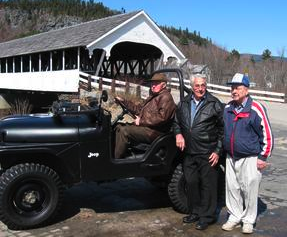
|
|
Photo credit: Allen Coop
|
The Coos County Democrat featured a small reunion that took place recently at a WW2 POW camp located in Stark, NH.
According to the article:
two former camp workers and one German ex-prisoner-of-war returned to the site to reflect on their time spent in Camp Stark during World War II, and the unlikely friendships that formed amongst the soldiers, civilians, and POWs on both sides of the fence.
Author: Kayti Burt
Publication: Coos County Democrat
Length: 1,148 words
Date: March 31, 2010
Posted by Kim on April 07, 2010 at 9 a.m.
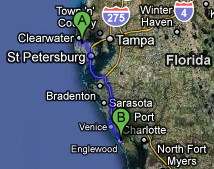
|
|
maps.google.com
|
According to the schedule, the museum bus has upcoming stops in Florida:
April 13, 2010 Largo Public Library, Largo, FL
April 17, 2010 Elsie Quirk Library, Englewood, FL
Those are the last stops on the list; not sure if more will be added.
Posted by Kim on April 07, 2010 at 8 a.m.
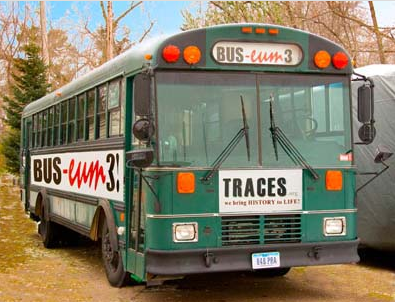
|
|
traces.org
|
We recently discovered an interesting traveling museum called "Held in the Heartland: German POWs in the Midwest 1943-46."
The tour is a part of a traveling exhibit program by TRACES. According to their site:
TRACES is a non-profit educational organization created to gather, preserve and present stories of people from the Midwest and Germany or Austria who encountered each other during World War II.
TRACES converted a 40-foot school bus into a mobile classroom and museum. On the bus:
The exhibit consists of 15 narrative display panels illustrated with photographs and documents, audio and DVD documentaries, artifacts and more.
The tour began in 2009.
More information:
See the next post for 2 upcoming stops in Florida.
Posted by Kim on April 06, 2010 at 11:14 a.m.
Blogger Lou Lohman published a nice review of Canadian Escapades on LouCeel.
He was kind enough to grant permission for us to reproduce in full. (Emphasis added.)
A short while ago I volunteered to read and review a new book, written by a WWII P.O.W. The book was to be a recounting of his three escapes from prison camp and his subsequent recaptures. The unique aspect to all of this was (and is) that the man was a German Flier shot down over England, his prison camp was in Western Canada, and one of his escapes took him into and across part of the United States.
The second unique aspect to all of this is the format of the book. It's actually a fairly short book at 125 pages, including the short appendix. But each page in the book is half German, half English, laid out side by side, so the text matches up. But back to that in a minute.
The story, in English, is an almost literal translation from the German. For a native English speaker, this represents a novel look into the way a non-English person thinks and speaks. The story itself is gripping, in parts, fascinating in others, and overall, well done. There are times, however, when the story gets to be a bit tricky to follow - due to the literalness of the translation. But still, well done.
Now about that side by side text. For the student of German, this is a novel way to explore the language as it is spoken by a native German speaker - for a German speaker, it also represents a novel way to see their language explode into English.
Posted by Kim on March 01, 2010 at 11:09 a.m.
(We'll start more active blogging soon. Meanwhile, here's a timely item that we came across.)
Historian Allen Koop, author of Stark Decency: German POWs in a New England Village, will be telling the story of New Hampshire's only World War II prisoner of war camp this week in Norwich, VT.
The event is part of the Vermont Humanities Council's Humanities Lecture Series called First Wednesdays.
According to the Norwich Public Library's website:
[Koop] describes how ordinary people in Stark turned bitter division into camaraderie.
title: Stark Decency: German POWs in a New England Village
speaker: Allen Koop
where: Norwich, VT
location: Norwich Congregational Church, 15 Church Street
date: Wednesday March 3, 2010
time: 7:00pm
cost: Free!
notes: Open to the public. For more information, call 802-649-1184.
(Update: changed the post title.)
| |
|


